Oral
X-Men: Deuterium & Other Non-Proton MR
ISMRM & ISMRT Annual Meeting & Exhibition • 10-15 May 2025 • Honolulu, Hawai'i

| 08:15 |
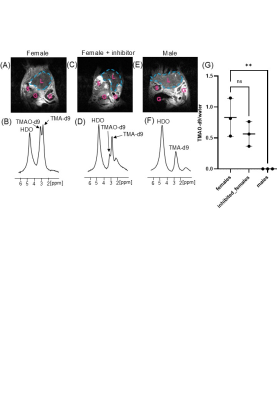 |
0036. In
vivo 2H-MR spectroscopy of trimethylamine metabolism in the
liver by the hepatic enzyme FMO3
H. Dessau, T. Harris, H. Allouche-Arnon, A. Bar-Shir
Weizmann Institute of Science, Rehovot, Israel
Impact: The ability to monitor the TMA-d9-to-TMAO-d9
metabolism will allow us to follow, for the first time
longitudinally and non-invasively, the role of TMAO in the
onset and progression of multiple diseases ranging from
cancer to cardiovascular disease.
|
| 08:27 |
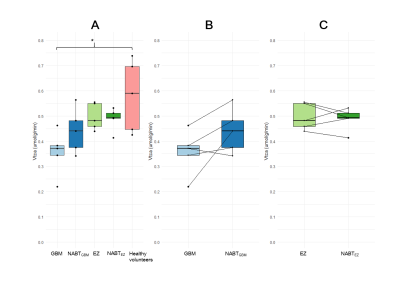 |
0037. Metabolic
modeling using Deuterium Metabolic Imaging data in healthy,
epileptogenic and glioblastoma brain tissue
R. Buijs, N. Ahmadian, K. Tesselaar, S. Otto, M. Gosselink,
H. Hoogduin, N. Van Klink, P. Van Eijsden, D. Klomp, E.
Wiegers
University Medical Center Utrecht, Utrecht, Netherlands
Impact: This study demonstrates the potential of
deuterium metabolic imaging with metabolic modeling to
estimate the tricarboxylic acid cycle rate in brain tissue,
providing insights into epilepsy and glioblastoma. Findings
could enhance non-invasive diagnostics and individualized
treatment strategies.
|
| 08:39 |
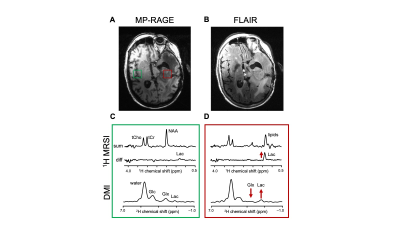 |
0038. Parallel
Detection of Lactate-Edited 1H MRSI and DMI to Differentiate
Total and Active Lactate Pools in Brain Tumors
Y. Liu, C. Kumaragamage, T. Nixon, S. McIntyre, H. De
Feyter, R. de Graaf
United Imaging Healthcare North America, Houston, United States
Impact:
The interleaved edited 1H MRSI and DMI offers an opportunity to study and compare the static and active metabolism in parallel with robust 1H-Lac detection providing novel and complementary insights to the wide range of clinical MRI scans. |
| 08:51 |
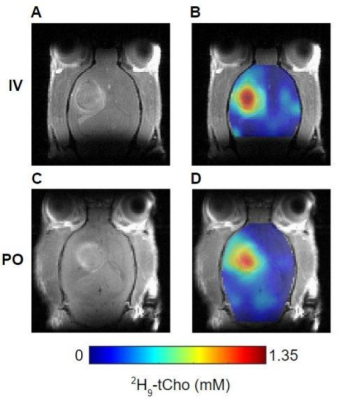 |
0039. Oral
administration of 2H9-choline at human dose for deuterium
metabolic imaging of brain tumors
V. Osoliniec, M. Thomas, R. de Graaf, H. De Feyter
Yale University, New Haven, United States
Impact: Our results indicate that a lower dose of orally
provided deuterated choline generated comparable
tumor-to-brain contrast to IV administration, facilitating
the potential clinical translation of DMI of deuterated
choline.
|
| 09:03 |
 |
0040. Deuterium-labeled
α-ketoglutarate enables metabolic imaging of the isocitrate
dehydrogenase mutation in brain tumors.
C. Taglang, G. Batsios, A-M Gillespie, P. Viswanath
UCSF , San Francisco, United States
Impact: Our studies provide proof-of-concept evidence
that diethyl-[3,3’-2H]-α-ketoglutarate
informs on tumor burden and treatment response in IDHm
gliomas. Clinical translation of diethyl-[3,3’-2H]-a-ketoglutarate
will provide clinicians with a tool to monitor disease
progression in IDHm glioma patients, which is currently
challenging.
|
| 09:15 |
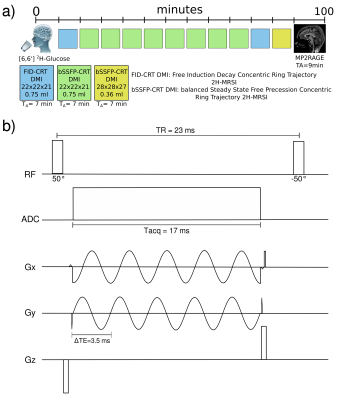 |
0041. High
resolution 3D Deuterium Metabolic Imaging of the human brain
using bSSFP with concentric ring trajectory readout at 7T
S. Frese, B. Strasser, L. Hingerl, E. Montrazi, L. Frydman,
V. Bader, A. Duguid, A. Osburg, S. Motyka, M. Krssak, T.
Scherer, R. Lanzenberger, W. Bogner, F. Niess
Medical University of Vienna, Vienna, Austria
Impact: Improving SNR and consequently spatial
resolution of deuterium metabolic imaging (DMI) data is
crucial to push DMI towards clinical application. bSSFP-CRT
sequences combined with appropriate reconstruction and
metabolite separation can facilitate this transition.
|
| 09:27 |
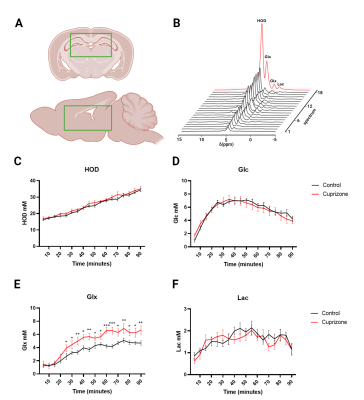 |
0042. Deuterium
metabolic imaging reveals altered glucose metabolism in a
multiple sclerosis mouse model

N. Vidas-Guscic, M. Heady, X. Ge, J. Garbow, C.
Guglielmetti
Washington University School of Medicine, Saint Louis, United States
Impact: DMI can assess Glx levels non-invasively in MS
and could serve as a novel marker of neuronal damage
following demyelination. DMI is clinically translatable and
holds potential for future MS clinical trials and other
disorders presenting Glx imbalance.
|
| 09:39 |
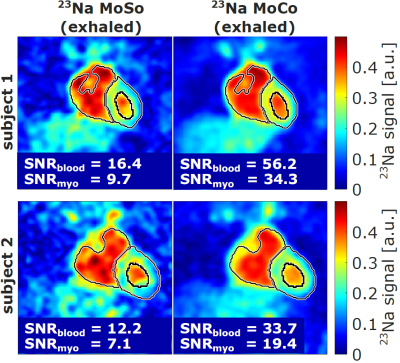 |
0043. Respiratory
motion corrected interleaved 23Na/1H pTx MRI of the human heart
at 7 Tesla

L. Ruck, N. Egger, C. Kopp, T. Wilferth, S. Konstandin,
M. Uder, A. Nagel
Institute of Radiology, University Hospital Erlangen, Friedrich-Alexander-Universität Erlangen-Nürnberg (FAU), Erlangen, Germany
Impact:
Interleaved 23Na/1H pTx MRI allows to perform respiratory motion correction of the 23Na MR data based on the additional 1H MR data. This could enhance the accuracy of myocardial Na+ quantification and improve inter-subject comparability. |
| 09:51 |
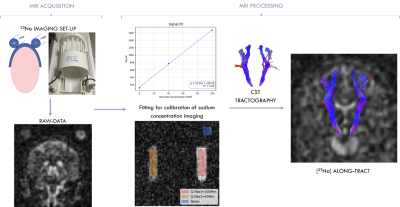 |
0044. Ionic
and Microstructural Alterations in the Corticospinal Tract in
SPG4: Insights from Sodium Imaging
G. Venturi, E. Cantoni, M. J. Rochat, G. Vornetti, A.
Quinzi, G. Rizzo, V. Vacchiano, G. Sighinolfi, F. Zaccagna,
D. N. Manners, R. Lodi, C. Tonon
IRCCS Institute of Neurological Sciences of Bologna, Bologna, Italy
Impact: This study demonstrates the potential of sodium
MRI as a non-invasive biomarker for early detection of
ionic disturbances in HSP-SPG4, enabling improved monitoring
of disease progression. It opens avenues for exploring
targeted therapies and differentiating HSP-SPG4 from other
neurodegenerative disorders.
|
| 10:03 |
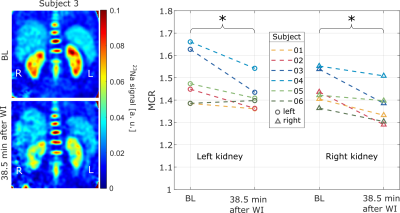 |
0045. Sodium
signal evolution in kidney imaging at 7T after water intake
applying an interleaved sequence scheme for 23Na/1H(pTx) imaging

J. Schirmer, L. Ruck, N. Egger, J. Herrler, S.
Nagelstraßer, T. Wilferth, T. Platt, S. Wildenberg, A.
K. Bitz, C. Kopp, M. Uder, A. M. Nagel
Institute of Radiology, University Hospital Erlangen, Friedrich-Alexander-Universität Erlangen-Nürnberg (FAU), Erlangen, Germany
Impact: This study demonstrates the feasibility of
interleaved 23Na/1H(pTx)
MRI at 7T to assess renal sodium dynamics non-invasively,
allowing exploration of hydration effects on renal sodium
balance. Improved B1-correction
and respiratory motion correction could enhance early
detection of kidney function changes.
|
The International Society for Magnetic Resonance in Medicine is accredited by the Accreditation Council for Continuing Medical Education to provide continuing medical education for physicians.